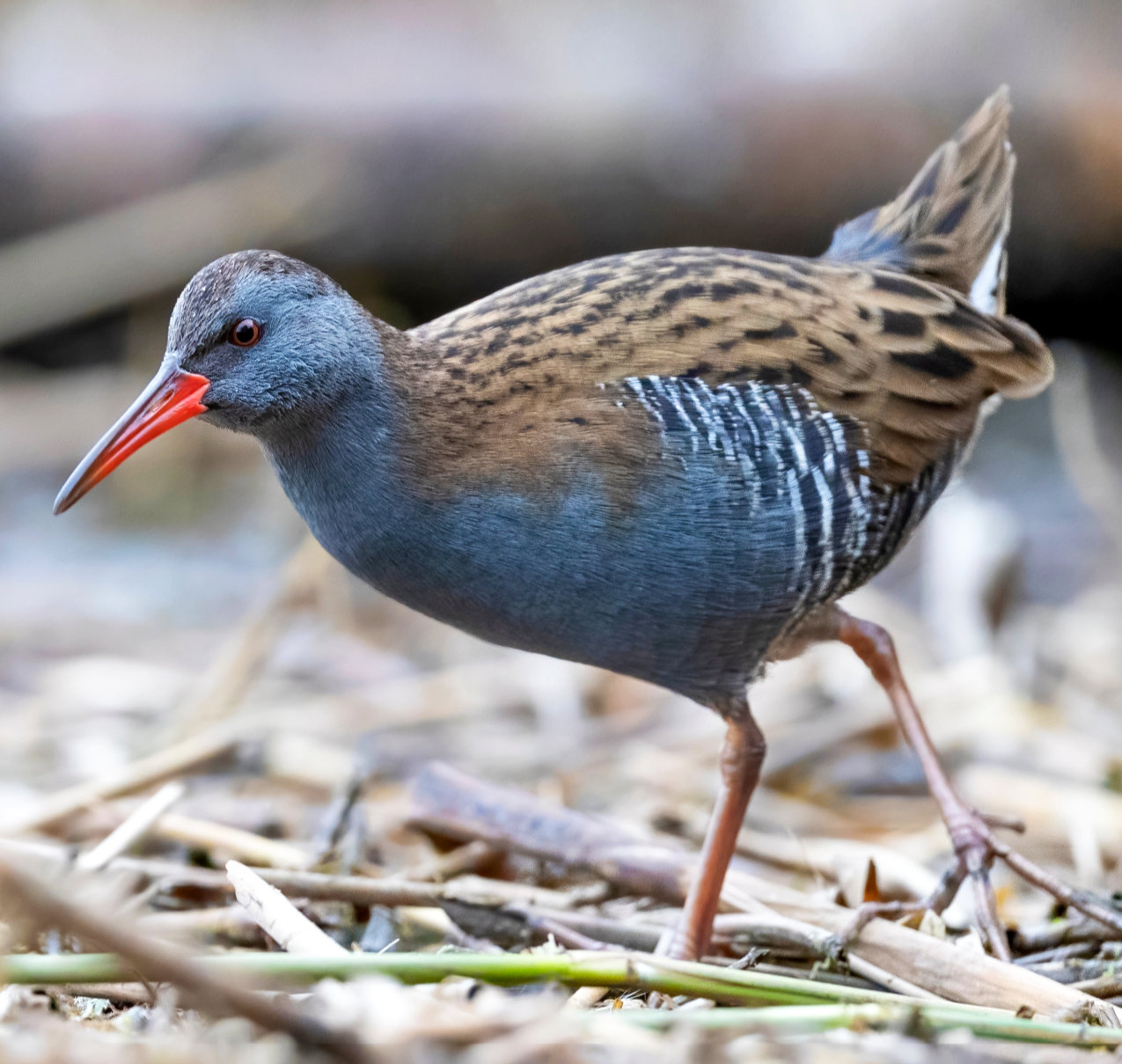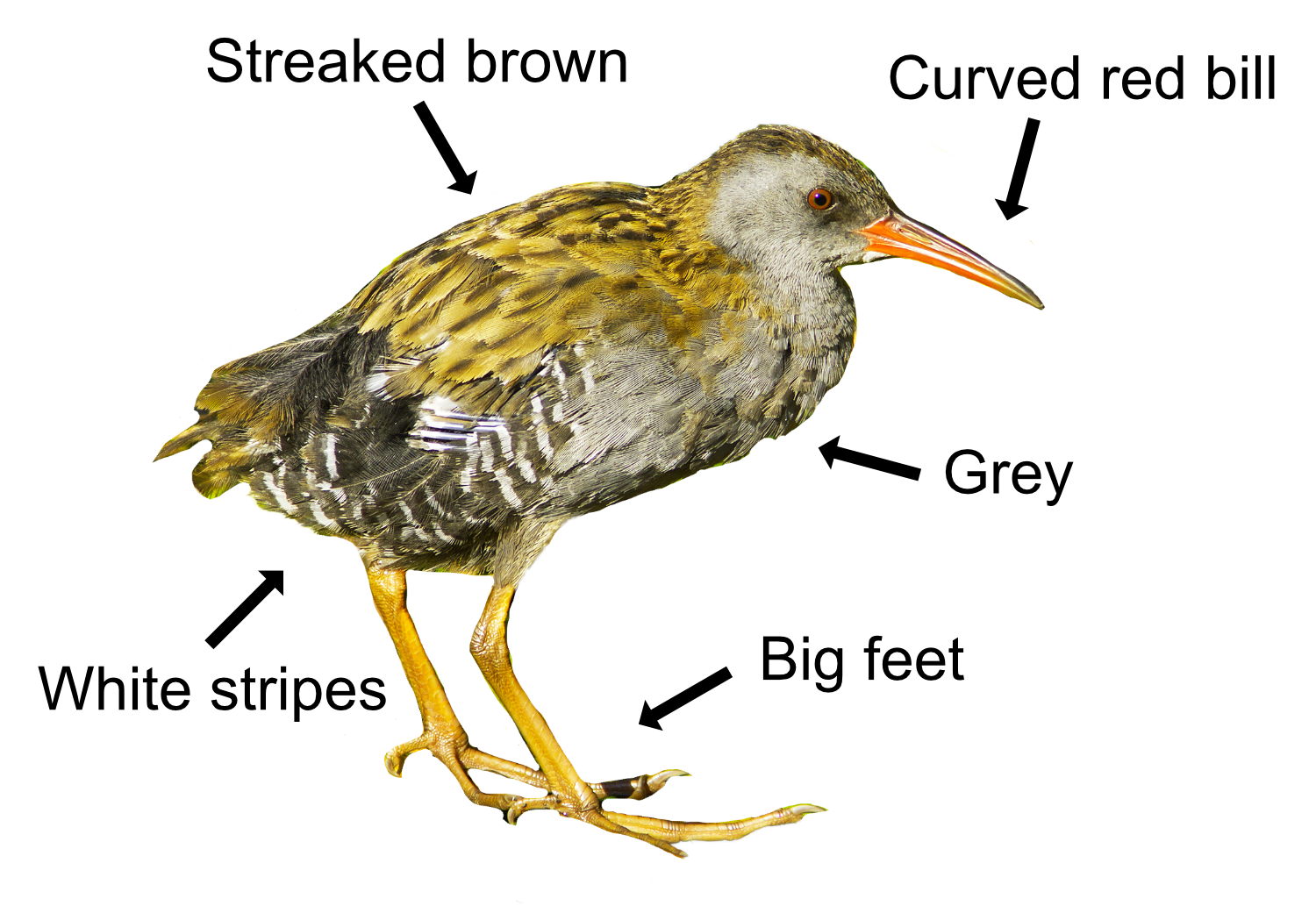
The Water Rail is the squealing piglet of the reedbed. It is a skulking, secretive wader walking or swimming through dense vegetation, mostly hidden. Cold winter weather sometimes forces it into the open and it will 'freeze' if surprised.
Smaller and distinctly slimmer than the Moorhen, the Water Rai has chestnut-brown upperparts with dark streaks, white stripes on its flanks, grey underparts, a grey face, and a long red slightly curved bill. Its slim body lets it slip through the dense reeds and its long legs with big feet stop it from sinking. It walks with a high-stepping gait, although adopts a crouch when running for cover, preferring to scuttle away than fly. The Water Rail flight is feeble and fluttering with trailing legs, though this is rarely seen as they mainly fly when migrating at night. They make a strange piglet-like call known as 'sharming' that is heard when they defend their territory.
They swim with a jerky motion like a Moorhen and feed in shallow water, foraging for plants and small creatures like shrimps, frogs, insects and snails. Water Rails follow established feeding routes, frequently returning to favourite hunting areas. They will even jump to take insects from plants, climb to find berries, or dislodge apples from trees so they can eat them on the ground.

Water Rails are monogamous and highly territorial when breeding. The male builds a well-hidden nest from whatever vegetation is available 15cm or more above the level of the marsh. If the water level rises, he will build it even higher. There are usually two broods with mum laying eggs in March and June. She does most of the incubation and the 6-11 eggs hatch after 19 days. She will defend the eggs from intruders or move them to another location. The youngsters are initially fed by both parents but soon leave the nest to feed themselves. They can fly 20 days later and become fully independent after a further month. Mum and dad are flightless for 3 weeks when they do their moult after breeding. The young Water Rails can breed themselves after their first year.
The 1,000 pairs of British Water Rails mainly stay in their breeding areas. Up to 10,000 arrive in autumn from northern Europe to overwinter, but numbers are hard to count being so secretive. One method is to play a Water Rail's call and listen to how many respond. There is evidence that the population is falling because of the draining of marshes and the loss of vegetation along waterways. They are also adversely affected by harsh winters that freeze the water and hot summers that dry out the reedbeds.
Their Latin name is 'rallus acquaticus', the Latin equivalent of the English 'Water Rail'. The oldest known fossils of a Water Rail are from Carpathia and date to the Pliocene era (2.5 - 5 million years ago). By the late Pleistocene (2 million years ago), the Water Rail lived across most of its present range. The squealing piglet has been around for a long time. Hiding is good for survival!